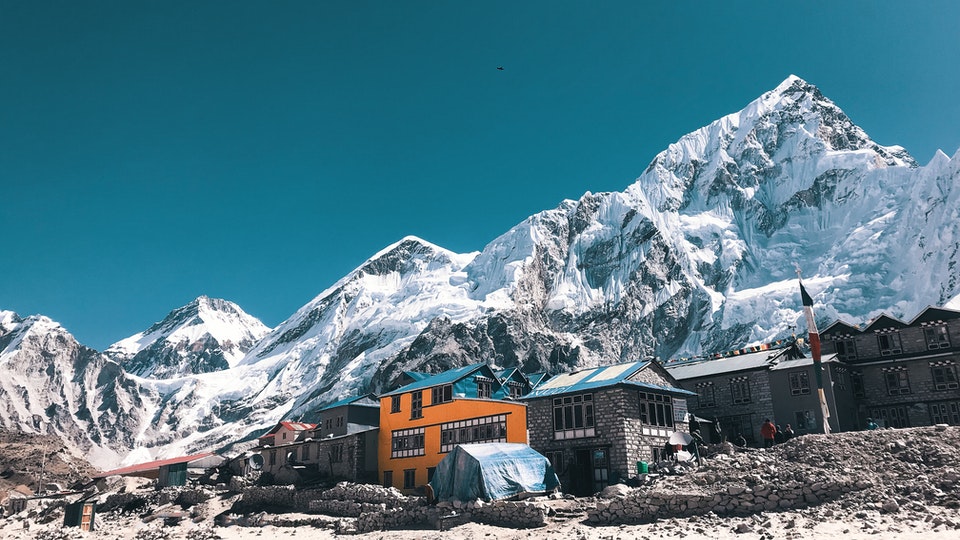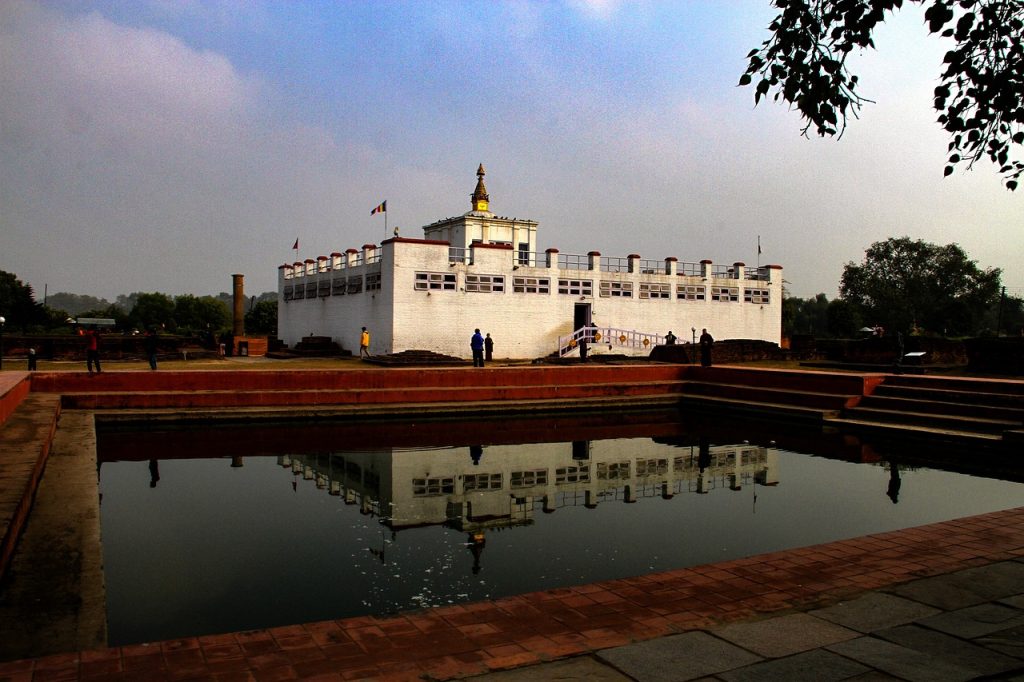The notion of visiting Everest Base Camp - even though you might not be scaling the world’s tallest mountain - is noble on its own, and is not an easy undertaking, requiring commitment and grit. However, to view the magnificent vistas of the tallest mountains in the world up close, makes all of the effort that this trip requires worth it ten times over.
A trip to Everest Base Camp starts from Tribhuvan Airport in Kathmandu, to Lukla, the gateway to Everest in Nepal, and one of the most dangerous airports in the world. The closer you get to Lukla, the more remote the landscape becomes, a distinct contrast to the hustle and bustle of Kathmandu. You might wonder, as you hurtle through the skies in a tiny aircraft, why you chose to leave the relative comfort of the capital city to fly to an airport carved into the side of a steep hill, but the sense of adventure that the mountains conjure dispels any doubts.
After a spine chilling descent into Tenzing-Hillary Airport, the view that greets you once you leave the aircraft is bound to make your excitement soar, as you get your first sightings of the mountains that surround Lukla. The light that bounces off of the snow capped mountains makes for a beautiful introduction to the gruelling trek that is required to see them up close, but before you start that journey, the town of Lukla is something that deserves to be explored on its own. Alongside helping you acclimatise to the decrease in oxygen, the small town of Lukla has attractions of its own. With its variety of lodging accommodations, from teahouses to more luxurious hotels, Lukla has something for every budget, alongside a variety of eating options from Nepali fare served at Little Lukla Restaurant to coffee at Himalayan Sherpa Coffee, all whilst basking in the beauty of the himalayas.
Leaving Lukla marks the start of your Everest base camp trek, with your first destination being Namche, the main port city in the region, other than Lukla. The main area for acclimatisation, the journey from Lukla to Namche Bazaar follows a path that requires you to trace the steep ups and downs of the hills that form the trail. Giving clear views of the breathtaking Himalayan landscape, the trek to Namche can take anywhere from a day to two days. While you acclimatise to the drop in oxygen at one of the various lodging options provided here, make sure you also visit the Tengboche Monastery, located off of the trail next to the village of Phakding. With brightly painted murals and a peaceful courtyard, Tengboche provides a tranquil space from which you can observe the slopes of Mt. Ama Dablam, and reflect on one of nature’s most beautiful creations.
Alongside breathtaking views and peaceful monasteries, Namche also provides a host of food options, alongside the sherpa culture museum, where you can learn more about the space that you’re inhabiting - Sagarmatha National Park and and Nepal’s Everest region- but most importantly, of the culture of the people who make travelling the region possible in each and every regard. From Namche, you continue your journey to Everest Base Camp by spending multiple days trekking the arduous route that goes through Tengboche and Dingboche, that eventually leads to Lobuche. While trekking through Tengboche, make sure you descend to the Dudh Koshi river bank and the settlements of Punge Thanga, a prime destination for a delicious lunch after a hunger inducing trek. However, don’t forget your permit, as this is also where its validity is checked. As you further acclimate yourself to the drop in oxygen you might choose to take long, meandering walks, or read a book with a backdrop of the Himalayas. Take it slow in these last couple of stops, as you’re so close to base camp that you would not want to descend without reaching it because of altitude sickness.
After an acclimatisation day spent at Dingboche, travellers often walk to Lobuche, which provides a stunning view of the mountain that this village is named after. Lobuche is the last stop before a journey to Gorak Shep, the final stop before reaching Everest Base Camp. However, its proximity to the base camp is not the only remarkable thing: if you have the time, make sure you visit Pyramid International Laboratory- Observatory. But even more so, as you follow the trail of the Khumbu glacier while leaving Lobuche, trekkers get a stunning panoramic view of the Summit of Mt. Everest alongside Mt. Nuptse and the various other daunting yet visually magnificent mountains that surround the tallest peak in the world.
Once you make it to Gorak Shep, you’re almost there! A short hike leads you to Kalapatthar, where the first Base Camp is situated. If you can, try for an early morning hike so that you can see the sun rise slowly over Mount Everest, with its snow covered edges reflecting the kaleidoscopic colours of the sky and sun. Take in the grandiosity and the beauty of the mountain, for you will have to descend soon.
The trek back to Lukla from Gorak Shep is comparatively shorter, yet equally arduous, with most travellers taking three to four days walking through Pheriche and Namche Bazaar to finally reach the point where they started their journey to Everest Base Camp. If you’re still dazed by the magnificence of Everest, the descent might feel even shorter. If you want reminders to mark this journey, Namche or Lukla would be the best place to buy them, as the shops there offer hoodies, bags and souvenirs that tell everyone else you made it to base camp. However, these souvenirs might also remind you long after you’ve left Lukla of the personal triumphs that reaching Everest Base Camp brings, and the introspection that comes with completing such an arduous trek. However, even if you do not get souvenirs from the shops, the journey you undertook, and the magnificence of Mount Everest is going to mark your heart forever.














